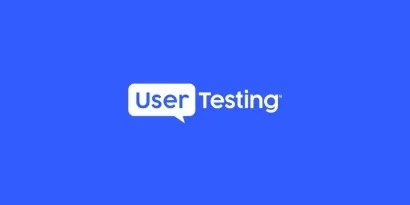
Episode 29 | January 31, 2022
Krikey’s AR gaming success through user feedback
Discover how Krikey blends augmented reality gaming with user feedback to build engaging mobile experiences and drive product success.
How Krikey is using augmented reality gaming and user feedback to reshape the mobile experience
Capturing user attention—and keeping it—is the holy grail for app developers. But for Krikey, an innovative mobile AR app, the answer isn’t just in slick design or immersive storytelling. It’s in listening closely to their users.
In a recent episode of the Insights Unlocked podcast, co-founders and sisters Jhanvi and Ketaki Shriram offered a fascinating look into how they built their business at the intersection of augmented reality gaming, user-generated content, and user testing for app development.
Let’s explore how Krikey is transforming mobile experiences with empathy, iteration, and innovation.
Building Krikey: A creative vision powered by tech and storytelling
Krikey isn’t just another mobile game—it’s a platform that combines the fun of social media with immersive, interactive AR experiences. Users create custom 3D avatars, star in action-packed adventures, and share their stories with others.
“We were very interested in interactive storytelling… and we felt that augmented reality gaming would be a really interesting new technology and avenue to explore,” Ketaki said.
With backgrounds in human-computer interaction and VR research, the Shriram sisters had both the technical chops and the creative vision to build something new. Jhanvi brought her creator-first mindset from her time at YouTube, while Ketaki contributed deep expertise from Stanford’s Virtual Human Interaction Lab and stints at Meta’s Oculus VR and Google X.
The role of feedback: building with your users, not just for them
Krikey’s early success didn’t come from building in a vacuum. From the beginning, the team made customer feedback a core pillar of their product strategy.
“We really want to be truly open to customer feedback,” Ketaki said. “Ultimately, it just helps the product succeed because we're giving users what they're asking for.”
To make that happen, Krikey adopted the UserTesting platform, which revolutionized how they conducted UX research and refined product design testing. By incorporating customer insights throughout the development lifecycle—from 2D mock ups to beta builds to post-launch reviews—they made smarter decisions and avoided costly missteps.

Case study: How user testing saved Run Ji Run
One of the best examples of this approach in action is the development of Run Ji Run, Krikey’s infinite runner game inspired by Indian street markets.
Originally, the team thought it would be more engaging if players saw their avatars running toward the screen. But early user testing told a different story.
“Users died very quickly… they were seeing their character, but they didn’t get to see the obstacles in advance,” said Ketaki. “It was confusing and frustrating for them.”
This feedback led to a major design pivot—switching the camera perspective to the more conventional “back-facing” view found in games like Temple Run. The lesson? UX feedback isn’t just useful—it’s essential.
ON-DEMAND WEBINAR
Continuous discovery: transform your product development process
Scaling feedback: Going from campus testing to global insights
Like many startups, Krikey started small—testing early builds with college students in person. But as their user base grew, especially in emerging markets like India, they needed a more scalable approach.
“We realized a lot of our users were actually in India. But we couldn’t sit down with them in person,” Jhanvi shared.
That’s where remote user testing became a game-changer. Using UserTesting’s platform, they were able to:
- Observe real users navigating the app on their own devices
- Capture both facial reactions and on-screen behavior
- Share highlight reels and insights across the entire team
This approach has fueled their growth—Krikey has scaled to over 2 million users while continuously improving the experience with customer-first insights.
Optimizing app store listings through regular health checks
Another key area where user feedback made a measurable impact was app store optimization. Krikey ran tests on everything from Play Store screenshots to app descriptions and trailers, and the results were immediate.
“We learned that users in India were more familiar with the term ‘3D’ than ‘AR’… That helped us change our messaging to increase conversion rates,” said Jhanvi.
They even discovered that users expected visuals showing characters emerging from phones to better represent augmented reality experiences, which led to photoshopped images that better conveyed the value of the app.
Now, Krikey runs regular health checks—testing their listings every few weeks to align with new product features and user expectations. It’s a powerful reminder that the experience starts long before the download button.
“If we had not invested in user testing, I don’t know if we’d be in the same position of growth and success.” – Jhanvi Shriram
ON-DEMAND WEBINAR
The ROI of human insight: prove your value to upper management
Keeping pace with evolving user expectations
One of the most exciting (and challenging) aspects of building a product in the AR gaming space is that user expectations are constantly shifting. What worked 12 months ago might feel outdated today.
“Now users know what AR is and they expect certain things in an AR app,” Jhanvi noted. “That has changed how we display and market ourselves, and even how we do tutorials.”
To stay ahead, Krikey conducts ongoing tests across the entire user journey—including:
- Signup flow – Optimizing for preferences like phone number sign-ins
- Onboarding tutorials – Transitioning from step-by-step guides to quest-based systems with in-app rewards
- Game and video experiences – Ensuring accessibility and engagement for both guests and account holders
This iterative, data-driven approach helps Krikey keep the player experience fresh, intuitive, and aligned with market trends.
The future: Where AR, Web3, and user creativity collide
Looking ahead, Krikey sees massive potential at the intersection of augmented reality gaming, the creator economy, and Web3 technologies. They're exploring ways to incorporate NFTs and blockchain features that allow players to own and trade digital assets—further deepening their engagement with the app.
“We're just at the beginning of Web3… and we see a lot of value in people owning digital assets and redeeming them inside mobile games,” said Ketaki.
This vision aligns with Krikey’s mission to democratize storytelling and empower users to shape their own experiences.
Why user testing should be your startup's secret weapon
For startups trying to find product-market fit, Krikey’s story offers a compelling roadmap. By investing in user testing for app development, teams can avoid blind spots, validate ideas quickly, and build products that truly resonate with their audiences.
“Access to the end consumer is extremely important in order to succeed as a company,” said Jhanvi. “Think about investing in user testing as investing in the future of your business.”
“We're lucky to be able to access actual users in India and globally,” Jhanvi said. “That’s made our business.”










